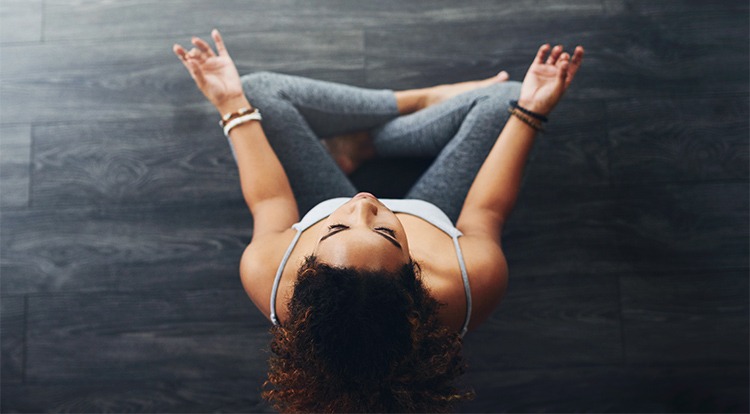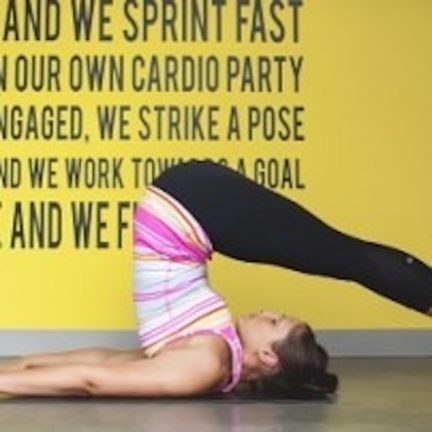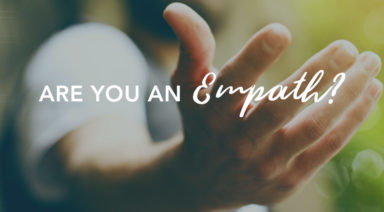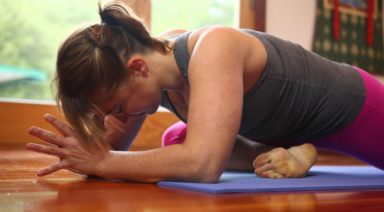How to Stop Comparing and Love Your Body

Have you ever found yourself looking through a magazine and agonizing over the fact that you will never look like a certain celebrity? What about looking at someone’s Facebook page and wishing you could be more like them, or at least get into their impressive yoga pose? I know I have.
It took me years to understand that comparing myself to others contributed to some major unhappiness. When you constantly compare yourself to others, you are almost always left with a feeling of inadequacy. In our Western culture, we are surrounded by reality TV and social media, which puts a huge pressure on us to be “perfect”.
One summer afternoon, at the age of six, while playing Barbies with my sister, I overheard our nanny telling her friend how perfectly proportioned Barbie’s body was. For the first time in my life, I gave the doll a second look. She does have perfectly long, slender legs and a super tiny waist, I thought to myself. I then went on with my afternoon of playing dolls, just as innocently as any six year old would do, and did not really give it a second thought.
FROM BARBIE TO BEYONCÉ
The next day, while running through the sprinklers, I felt my thighs touch. I suddenly felt a sense of disgust overtake me. My body was not perfect. I was flawed. Little did I know that this belief, I had developed about my body, would stick with me for years to come.
Throughout my grammar school years, I loved to look at the magazines in the grocery store check-out isles as my mom paid for the groceries. I distinctly remember noticing that none of the beautiful celebrities’ thighs even came close to touching. They had tiny waistlines and the most glamorous clothes. I loved studying their bodies, their clothes, hair and makeup. When I compared myself to them, in my mind, I was far from measuring up.
When I reached high school, a curvaceous new celebrity rolled onto the cover of the magazines that I so religiously studied. Her name was Beyoncé. She had radiant skin and hair and was practically worshiped on magazine covers for her curves. Rather than feel like it was finally okay to have curves, I instead felt a sense of confusion. The media was telling me it was okay to have curves, yet everywhere I looked they still showed only stick thin celebrities and models.
As a result of this confusion, I began to break away from what the world was telling me to look like. Today I accept that there is no such thing as “perfect”. What is “perfect” anyways? Is Barbie’s body perfect, is Beyoncé’s or is yours? When we feel good about ourselves and stop comparing ourselves to others, leading a healthy, happy life becomes much easier!
The Meaning of Life Experiment; The Age When You'll Find Purpose

The calendar has turned the page and we find ourselves facing a brand new year and decade. So many of us take this annual ritual as a signal to assess our life’s purpose and meaning. The very question of the meaning of life has captivated human existence from the very beginning, from philosophy to religion, to science, and metaphysics. But now a scientific study has determined the average age at which people say they believe they’ve found some meaning,
In a 2009 psychological test called “The Meaning of Life Questionnaire,” over 8000 participants displayed two very different scores – the first being how hard the participants felt they were searching for a sense of meaning, or purpose, and the second score showing whether the participants believe they’d found it. The results? The harder participants looked for meaning, the lower their happiness and life satisfaction were rated.
There is no one meaning per se; the meaning of life is both a universal and individual quest and one that is ever-changing. As researchers have discovered, the meaning of life is not a single, specific goal we aim to reach, but a continual striving that we fine-tune and evaluate, transforming as we grow and age.






































